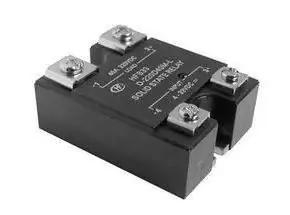The thermal relay is an electrical device that protects the electric motor of any electrical appliance from critical temperatures. Under increased load conditions, the engine, which sets in motion any mechanisms of an electrical machine or electrical appliance, consumes an increased amount of electricity. This energy can be many times higher than the prescribed norm for the engine. As a result of the overload process, the temperature inside the electrical circuit begins to rise rapidly. This, of course, may well lead to a breakdown of this electrical appliance. To prevent this, additional special devices are included in the electrical circuits, designed to cut off the supply of electricity in case of any emergency conditions (transients in electrical networks, overloads, etc.). Such a protective device is called a thermal relay (sometimes you can find the name "thermal relay" in the literature). The main task of the thermal relay is to maintain the operating mode of the electrical appliance and its overall performance.

The thermal relay has in its innerdesigns a special bimetallic plate. Under the influence of overloads and increased voltage in the electrical network, such a plate bends (deforms), and in its normal state it has a fairly flat surface. This bimetallic plate closes the electrical contacts tightly, and therefore the current can flow freely through the electrical circuit.

When an overvoltage and an increase in the value of the electric current in the circuit begins to rapidly increase the temperature. This contributes to the heating of the main element of the thermal relay - a two-layer metal plate. The latter begins to bend and breaks the flow of electricity, since the thermal relay is designed to cut off the load and voltage when the electrical network is overloaded.

However, the bimetallic plate bends rather slowly. If the contact is movable and directly connected to it, then the low deflection rate will not ensure the extinction of the arc that occurs when the circuit is broken. Therefore, the design of the thermal relay provides for an accelerating device, the so-called "jumping contact". It follows that the choice of a thermal relay is based on such a characteristic as the dependence of the response time on the magnitude of the electric current.
Due to such a gap, the operation of the machine will be stopped. After some time (usually half an hour - an hour), the plate cools down and returns to its previous state, which restores the operation of the electrical circuit circuit. The device returns to working condition.
There are several types of thermal relay. The TRP relay (for a single-phase load), the TRN relay (for a two-phase load), the thermal relay PTT (for long-term overload in a three-phase circuit) and the thermal relay RTL (protection of electric motors from prolonged overloads) have become widespread.






